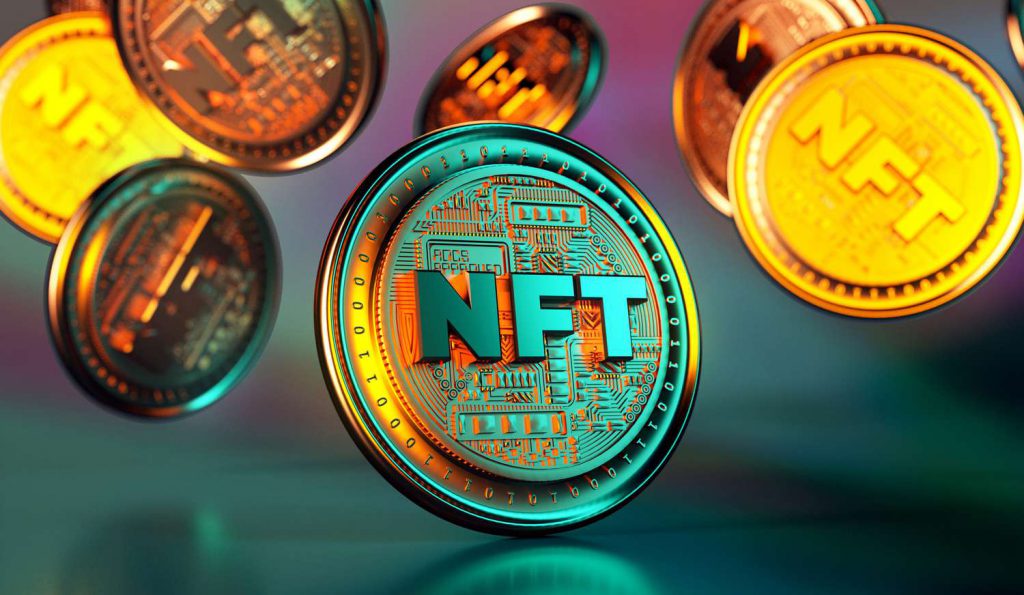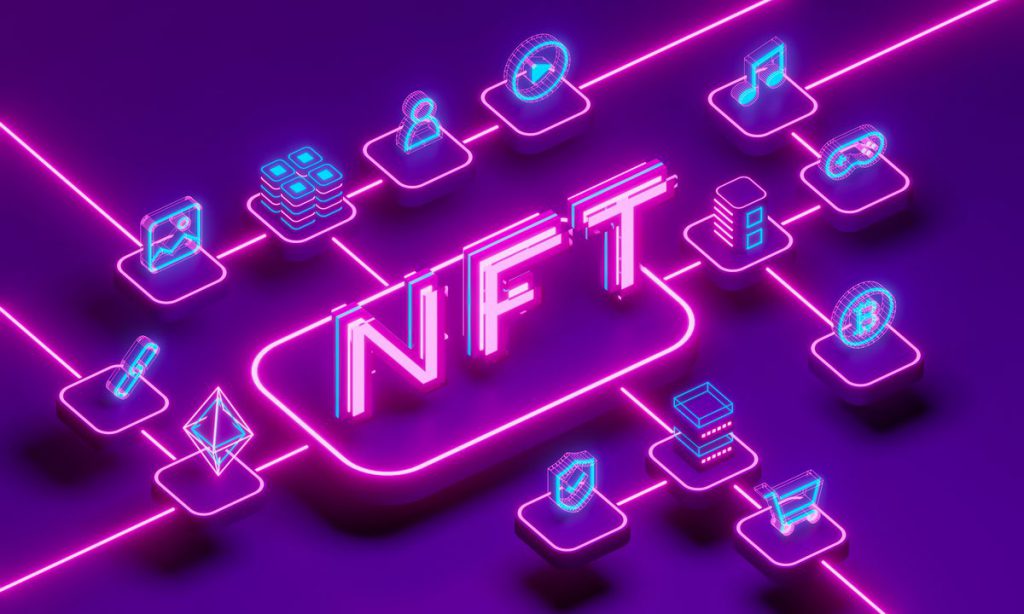What Are NFT Royalties? A Game-Changer for Digital Artists and Content Creators
In the age of Web 3.0, the world of art and content creation is undergoing a transformative change.
NFTs empower artists to monetize their talents. Discover NFT royalties, central to this digital revolution.
Creators benefit globally from “NFT royalties,” a game-changer in this innovative ecosystem. Discover its crucial features.
Also read: What Are Blue-Chip NFTs?

Understanding NFTs and Their Significance for Creators
NFTs, or non-fungible tokens, represent unique digital assets stored on a blockchain.
Additionally, NFTs stand out and cannot be exchanged like cryptocurrencies. Unlike Bitcoin or Ethereum, each NFT is unique.
Furthermore, NFTs’ uniqueness suits rare items and intellectual property representation, like art, music, virtual real estate, and more.
NFTs enable artists to showcase work globally, reach wider audiences, and earn fair compensation for their creations.
In the traditional art world, creators often receive a one-time payment for their work, with no profit share if their artwork appreciates over time.
Additionally, NFTs challenge this model by enabling creators to retain a stake in their work even after its sale through a feature known as NFT royalties.
Deciphering NFT Royalties and Their Mechanism
NFT royalties represent a pre-determined percentage of the sale price that the original creator receives each time their NFT is sold on secondary markets.
This feature ensures that creators continue to profit from their work even after the initial sale, providing a sustainable income source in the ever-evolving digital landscape.
When an NFT is created or ‘minted’, the creator can specify a royalty percentage they will receive for all future sales of that NFT.
This percentage typically varies, but it’s often set between 2.5% and 10%. Whenever the NFT is resold, the specified royalty is automatically deducted from the sale price and transferred to the original creator’s digital wallet.

The process of earning NFT royalties begins with minting the NFT. Here, the creator registers their digital asset on the blockchain, creating a unique and secure record of ownership.
During this process, the creator can set the royalty percentage using smart contracts, which are self-executing contracts with the terms of the agreement directly written into the code.
As a result, when the NFT changes hands, the smart contract automatically allocates the predetermined royalty to the original creator.
The Impact of NFT Royalties on Creators’ Earnings
The royalty system associated with NFTs opens up a wealth of opportunities for creators.
With each subsequent sale of their work, creators can capitalize on its increasing value over time. This mechanism creates a long-term income stream that can keep them motivated to produce high-quality work.
Consider this scenario: An artist mints an NFT and sells it for 50 ETH (Ethereum). This initial sale earns the artist 50 ETH.
Also read: Who Invented NFTs?
However, if the artist had set a 10% royalty on the NFT, they would continue to earn a portion of each future sale. If the buyer resells the NFT for 500 ETH, the smart contract triggers and reserves 10% of the sale price for the original creator.
This way, each subsequent sale generates additional royalty revenue for the artist, creating a sustainable income stream.
It’s important to note that while the royalty rate for an NFT remains constant, the sale price can vary based on market demand, scarcity, and other factors.
This means the creator could earn different royalty amounts from different sales, even though the royalty percentage stays the same.
The Pros and Cons of NFT Royalties
Like most innovative concepts, NFT royalties come with their own set of advantages and challenges.
Pros
- Ongoing Revenue: NFT royalties provide creators with a way to earn continuous income from their work, even after the initial sale. This ensures that the financial reward for their creative endeavors isn’t a one-time event.
- Fair Compensation: NFT royalties ensure that creators receive a fair share of the profits as their work appreciates in value. This feature allows creators to earn more as their work’s value increases.
- Automatic Payout: The smart contract mechanism makes the royalty payout process seamless and automatic. This eliminates the need for intermediaries and reduces the risk of payment disputes.
Cons
- Potential Decrease in Buyer Interest: Knowing that they’ll have to pay royalties on every resale might deter potential buyers from investing in NFTs. This could potentially reduce the demand for an artist’s work.
- Market Volatility: The NFT market is highly volatile, with prices fluctuating rapidly. This could affect the frequency of NFT sales and, consequently, the royalty earnings of the creator.

NFT Marketplaces Supporting Royalties
Several NFT marketplaces have embraced the concept of NFT royalties, providing a platform for creators to earn a fair share from their work’s resale. Some of the prominent ones include:
- OpenSea: As the largest marketplace for non-fungible tokens, OpenSea provides a platform where collectors are obligated to pay a nominal 0.5% royalty fee on old and new purchases. However, collections that implement on-chain enforcement tools can receive full royalty payments of up to 10%.
- Rarible: This user-friendly platform allows creators to set a royalty rate of up to 50%. Rarible charges a 1% fee on every transaction conducted on the platform, applicable to both buyers and sellers.
- SuperRare: Known for its emphasis on unique digital artworks, SuperRare ensures that the original owner gets a 10% royalty on secondary sales. Buyers pay a 3% fee for each sale.
- Foundation: This platform reserves a 10% royalty for the original creator on every secondary sale. The foundation charges a 5% fee on every secondary sale, with the seller receiving the remaining 85%.
The Future of NFT Royalties
NFT royalties have significantly altered the commercial dynamics of the art industry. They have introduced a reliable income source for creators, motivating them to continue their craft.
Furthermore, as the use of NFTs grows, we can anticipate further innovations in art creation, distribution, and valuation. NFTs have not only revolutionized the art industry but also have the potential to shape the future of creative expression.
Conclusion
In conclusion, NFT royalties are groundbreaking, providing artists and content creators with a sustainable and fair income model in the digital era.
Furthermore, creators can continue earning as their work appreciates in value by maintaining a stake in it after the initial sale, marking a significant shift from traditional art world dynamics.
As we move forward in the age of Web 3.0, NFT royalties will undoubtedly play a pivotal role in shaping the future of creative expression.










